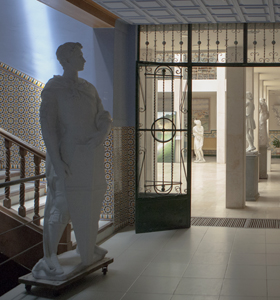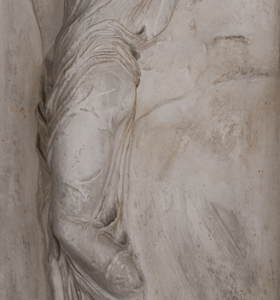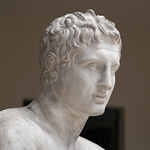 |
|
 |
La Academi@
|
|
Realismo Contemporáneo en la pintura |
|
|
| |
|
COURTYARD OF THE PLASTER CASTS |
| |
|
This collection of "casts" are copies of plaster molds taken from original sculptures and architectural ornaments of ancient Greece and Rome. In the absence of the originals, reproductions of plaster have been used along 500 years to the training of architects, sculptors, painters and engravers, influencing the visual arts from the fifteenth century.
Apart from its role in the classrooms for the study of proportions and the human figure as the classical canons, plaster reproductions became indispensable parts in cabinets and private collections, scholars, aristocrats and European royalty . However, since the advent of modernity and anti-academic unleashed in the early twentieth century, the use of these models were forgotten. Currently, the best reproductions of plaster are part of the collections of major museums, such as the Victoria & Albert Museum in London. |
|
| |
|
Col. Rosendo, La Academi@.
|
|
The Dresden Ephebe
Col. Rosendo, La Academi@
|
|
|
| |
|
The satyr Marsyas
Col. Rosendo, La Academi@. |
|
Dancing Satyr
Col. Rosendo, La Academi@
|
|
|
| |
|
Venus de Milo
Col. Rosendo, La Academi@
|
|
Relief of the Winged Victory, right: Wounded Amazon
Col. Rosendo, La Academia |
|
|
| |
| |
|
Rosendo Loriente Collection
This collection of plaster casts is part of the academic material of the nowadays closed Academy Artaquio of drawing, directed during decades by its teacher Rosendo Loriente Escallada. During the last half of the twentieth century, his workshop was legendary in Madrid, where renowned architects and painters in the art of drawing were trained. It was at the beginning of the second millennium - when the Rosendo left his teaching - when the opportunity to acquire part of his valuable collection of these reprodutions emerged. At present, this Academy in Chinchon continuous the tradition of teaching drawing in the classical manner and preserves this collection giving the usefulness and value it always had. Casts still retain the patina of charcoal strokes of the studients formed for over half a century |
|
| |
| |
|
Opening hours:
From Monday to Friday
10am to 2pm and 4pm to 6pm
[free entrance]
La Academi@
Calle Canteras 18. Chinchón 28370 - Madrid [España]
Tel.: [34] 91 893 51 68
fundacion@arauco.org
How to arrive
|
|
|
|
 |
| |
|
|
THE CLASSICAL ART MODELS
The History of plaster models
In the mid-third millennium BC the Egyptians started the modeling method, removing the mold from the heads of the mummies to make the portrait of the dead. The Greeks, followed by the Romans, adopted the technique of plaster, as a means to reproduce copies of famous statues in marble and bronze. The first known location of a collection of plaster was Imperial Rome. The collapse of the Roman Empire ended with the popularity of the art collection in the mediterranean world. The rise of Christianity was the great cause of the destruction of sculptures and casts, as a means to avoid references to earlier pagan beliefs.
[Read +] |
|
| |
|
| |










